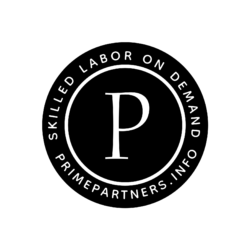Industrial Offshore Electrician Interview Guide
Overview of Required and Recommended Certifications, Educational Background, and Industry Qualifications
To become a successful Industrial Offshore Electrician, certain educational backgrounds, certifications, and industry qualifications are essential. Below is a breakdown of these requirements and recommendations:
Required Certifications and Education
- High School Diploma or GED: A basic educational requirement for most electrician positions.
- Journeyman Electrician License: Typically required to work as an electrician. The process to obtain this license varies by region but generally involves a combination of classroom instruction and on-the-job training.
- Basic Offshore Safety Induction and Emergency Training (BOSIET): A mandatory certification for anyone working offshore, covering safety procedures and emergency response.
- CompEx Certification: Focuses on the safety of electrical installations in explosive atmospheres, which is crucial for offshore environments.
Recommended Certifications and Qualifications
- Electrical Engineering Degree: While not always required, having a degree strengthens a candidate’s profile, particularly for more technical roles.
- Advanced Offshore Safety Certifications: Such as Further Offshore Emergency Training (FOET) or Helicopter Underwater Escape Training (HUET).
- First Aid Certification: Having basic first aid knowledge is valuable in any setting, particularly offshore.
- Specialized Training in High Voltage Systems: Given the complexity of offshore electrical systems, this is highly beneficial.
- Experience with Programmable Logic Controllers (PLCs): Common in industrial settings for automation and control systems.
Interview Questions and Answers
Technical Questions
What are the key considerations when designing an electrical system for an offshore platform?
- Answer: When designing an electrical system for an offshore platform, several key factors must be considered:
- Safety and Compliance: Adherence to international standards like IEC or NEC to ensure safety in explosive environments.
- Reliability and Redundancy: Systems must be highly reliable with backup systems in place to prevent downtime.
- Corrosion Resistance: Use of materials and coatings that resist the harsh marine environment to prevent corrosion.
- Load Calculations: Precise load calculations are necessary to ensure the system can handle peak demands and avoid overloads.
- Environmental Impact: Systems should minimize environmental impact and support sustainable operations.
- Real-World Scenario: On a project in the North Sea, an offshore platform required a complete electrical system overhaul. The team prioritized corrosion-resistant materials and implemented a dual-redundancy power supply to ensure continuous operation even during maintenance. This led to a 20% reduction in downtime over the previous year.
- Common Pitfalls:
- Underestimating the harsh environmental conditions, leading to premature failure of components.
- Overlooking the importance of redundancy, which could lead to critical failures.
- Follow-Up Points:
- How have you dealt with unexpected challenges in offshore electrical projects?
- Can you discuss a time when a design decision improved the safety or efficiency of an electrical system?
Explain the process of troubleshooting a malfunctioning generator on an offshore platform.
- Answer: Troubleshooting a generator involves several steps:
- Initial Assessment: Begin by gathering information about the generator’s recent performance and any error codes displayed.
- Visual Inspection: Check for obvious signs of damage or wear, such as leaks or burnt components.
- Electrical Testing: Use multimeters to check voltage, current, and resistance in key circuits.
- Fuel System Check: Ensure fuel lines are clear and the fuel quality is adequate.
- Examine Control Systems: Verify that PLCs or control modules are functioning correctly.
- Real-World Scenario: While working on an offshore rig, a generator failure occurred. Initial visual inspections revealed no obvious damage. Further electrical testing showed a faulty voltage regulator, which was replaced, restoring full functionality.
- Common Pitfalls:
- Failing to check the control systems, which could lead to overlooking the root cause.
- Ignoring fuel system issues, which can be a common generator problem.
- Follow-Up Points:
- Describe a time you had to think creatively to solve a generator issue.
- How do you ensure regular maintenance prevents such malfunctions?
Behavioral Questions
Describe a time when you had to work under pressure. How did you handle it?
- Answer: Working offshore often involves high-pressure situations due to the remote and demanding environment.
- Situation: During a maintenance shutdown, a critical electrical fault was discovered that could delay the entire operation.
- Action: I quickly assembled a team, delegated tasks based on individual strengths, and maintained constant communication with the control room.
- Outcome: We identified the faulty wiring and replaced it within hours, preventing significant downtime and maintaining the shutdown schedule.
- Alternative Considerations:
- Ensuring all team members are clear on their roles to prevent confusion.
- Keeping stakeholders informed to manage expectations.
- Common Pitfalls:
- Allowing stress to impact decision-making, leading to errors.
- Failing to communicate effectively with the team.
- Follow-Up Points:
- How do you prepare for high-pressure situations in advance?
- Can you give an example of when a high-pressure situation led to a positive change in your work process?
How do you prioritize tasks when working on multiple projects?
- Answer: Prioritization is key to managing multiple projects effectively.
- Situation: While managing a scheduled maintenance task, an unexpected system alert required immediate attention.
- Action: I assessed the urgency and potential impact of each task, prioritizing the system alert due to its immediate threat to safety and operations.
- Outcome: By addressing the alert first, I prevented a potential system failure and returned to the maintenance task with no significant delay.
- Alternative Considerations:
- Utilizing project management tools to track tasks and deadlines.
- Regularly reevaluating priorities as project conditions change.
- Common Pitfalls:
- Spreading resources too thin, leading to reduced effectiveness.
- Overlooking less urgent tasks that could become critical if neglected.
- Follow-Up Points:
- What tools or techniques do you use to manage your workload?
- How do you communicate priorities to your team?
Situational Questions
If you noticed a potential safety hazard while performing routine maintenance, what steps would you take?
- Answer:
- Immediate Action: Stop work immediately and secure the area to prevent accidents.
- Assessment: Evaluate the hazard to understand its severity and potential impact.
- Report: Document the hazard and report it to the safety officer or supervisor.
- Mitigation: Work with the team to implement immediate corrective actions if possible.
- Real-World Scenario: During a routine inspection, I noticed corrosion on a vital electrical junction box. Work was halted, and the corrosion was treated and sealed to prevent further damage, ensuring safety.
- Common Pitfalls:
- Ignoring minor hazards, which can lead to larger safety issues.
- Failing to document the hazard, resulting in a lack of accountability.
- Follow-Up Points:
- How do you ensure ongoing safety compliance in your work area?
- Can you provide an example of a time when you improved safety protocols?
How would you handle a situation where a team member is not following safety protocols?
- Answer:
- Private Conversation: Discuss the issue with the team member in a private setting to understand their perspective.
- Education: Reinforce the importance of safety protocols and provide additional training if necessary.
- Monitor: Keep an eye on the team member’s adherence to protocols moving forward.
- Real-World Scenario: A colleague repeatedly neglected to wear appropriate PPE. After a private discussion and additional training, their compliance improved significantly.
- Common Pitfalls:
- Publicly reprimanding the team member, which can lead to resentment.
- Ignoring the behavior, which compromises safety.
- Follow-Up Points:
- What steps do you take to promote a culture of safety within your team?
- How do you balance maintaining productivity with ensuring safety compliance?
Problem-Solving Questions
Describe how you would approach diagnosing an intermittent fault in an offshore electrical system.
- Answer:
- Data Collection: Gather as much information as possible about when the fault occurs and any patterns.
- Systematic Testing: Use diagnostic tools to test different parts of the system under various conditions.
- Isolation: Isolate sections of the system to narrow down the potential causes.
- Real-World Scenario: An offshore platform experienced sporadic power outages. By analyzing data logs and testing individual circuits, I identified a faulty relay as the cause, which was then replaced, resolving the issue.
- Alternative Considerations:
- Considering environmental factors, such as temperature or humidity changes.
- Consulting with colleagues to gather additional insights.
- Common Pitfalls:
- Jumping to conclusions without sufficient evidence, leading to incorrect diagnoses.
- Overlooking simple solutions, such as loose connections.
- Follow-Up Points:
- How do you document and communicate your findings during a complex troubleshooting process?
- Can you discuss a time when your troubleshooting led to a long-term solution or improvement?
How would you handle a situation where a critical part is unavailable, and repairs cannot proceed?
- Answer:
- Alternative Solutions: Identify if there are any temporary fixes or workarounds that can be implemented.
- Sourcing Options: Explore alternative suppliers or expedited shipping options to acquire the part quickly.
- Communication: Keep all stakeholders informed about the situation and the steps being taken to resolve it.
- Real-World Scenario: During a maintenance operation, a critical relay was unavailable. By sourcing a compatible relay from a nearby platform and arranging a temporary workaround, the system was kept operational until the correct part arrived.
- Common Pitfalls:
- Failing to communicate delays, leading to frustration among stakeholders.
- Implementing temporary fixes that could lead to further issues if not monitored.
- Follow-Up Points:
- How do you ensure temporary fixes do not become permanent solutions?
- What strategies do you use to maintain operations during unexpected delays?
This comprehensive guide provides a strong foundation for preparing for an interview as an Industrial Offshore Electrician, emphasizing technical expertise, safety, and problem-solving skills.
More Industrial Interview Guides
Explore more interview guides for Electrical positions.
Industrial Offshore Electrician Interview Guide
The Industrial Offshore Electrician Interview Guide equips job seekers with essential strategies to excel in intervie...
Industrial Electrical Foreman Interview Questions and Answers
This guide provides job seekers with a comprehensive set of Industrial Electrical Foreman interview questions and ans...
Industrial Master Electrician Interview Help
The Industrial Master Electrician Interview Help guide equips job seekers with essential knowledge and strategies to ...
Industrial Wind Turbine Electrician Interview Guide
The Industrial Wind Turbine Electrician Interview Guide is a comprehensive resource designed to prepare job seekers f...
Industrial Apprentice Electrician Interview Help
The Industrial Apprentice Electrician Interview Help guide equips job seekers with essential insights and strategies ...
Recent Articles
Check out more articles from Best Electrician Jobs about getting hired inthe electrical industry.
The Ultimate Electrician Resume Guide (2025 Edition)
Step-by-step blueprint to craft a job-winning electrician resume—free Google Docs templates, mobile editing tips, and...
Best Job Board for Electricians
Discover the best job board for electricians! Boost your career with insights on salaries, training, and growth!
Improve Your Electrician Job Postings for More Applicants
Discover how to improve your electrician job postings for more applicants! Boost your career with insights on salarie...
What is the Highest Paying Electrician Role?
Discover the highest paying electrician roles and how to prepare for them. Learn about the skills and certifications ...
Industrial Electrician Careers in California
From manufacturing plants to data centers, industrial electricians play a vital role in California's economy. Discove...
Featured Jobs
-

- Company
- Prime Partners
- Title and Location
- Residential Journeyman
- Lynchburg, VA
- Employment Type
- FULL_TIME
- Salary
- $30.24-$32.48/HOUR
- Team and Date
- Residential
- Posted: 11/05/2025
-

- Company
- Prime Partners
- Title and Location
- Cable Puller
- Dublin, CA
- Employment Type
- FULL_TIME
- Salary
- $18.72-$23.78/HOUR
- Team and Date
- Commercial
- Posted: 11/05/2025
-

- Company
- Prime Partners
- Title and Location
- Senior Audio Visual Technician
- La Puente, CA
- Employment Type
- FULL_TIME
- Salary
- $42.89-$50.53/HOUR
- Team and Date
- Commercial
- Posted: 11/05/2025
-

- Company
- First Contracting
- Title and Location
- Journeyman Electrician
- Detroit, MI
- Employment Type
- FULL_TIME
- Salary
- $31.53-$38.18/HOUR
- Team and Date
- Residential
- Posted: 11/05/2025
-

- Company
- Prime Partners
- Title and Location
- Lead Security Technician
- Indianapolis, IN
- Employment Type
- FULL_TIME
- Salary
- $36.04-$44.52/HOUR
- Team and Date
- Commercial
- Posted: 11/05/2025
-

- Company
- Prime Partners
- Title and Location
- Electrician Helper
- Eureka, CA
- Employment Type
- FULL_TIME
- Salary
- $20.48-$26.58/HOUR
- Team and Date
- Commercial
- Posted: 11/05/2025
Best Electrician Jobs
Ready to get started?
Stop worring about manpower. And get back to what you do best.
Best Electrician Jobs is for Everyone
At Best Electrician Jobs, we are dedicated to fostering an inclusive environment that values diverse perspectives, ideas, and backgrounds. We strive to ensure equal employment opportunities for all applicants and employees. Our commitment is to prevent discrimination based on any protected characteristic, including race, color, ancestry, national origin, religion, creed, age, disability (mental and physical), sex, gender, sexual orientation, gender identity, gender expression, medical condition, genetic information, family care or medical leave status, marital status, domestic partner status, and military and veteran status.
We uphold all characteristics protected by US federal, state, or local laws, as well as the laws of the country or jurisdiction where you work.
 Best Electrician Jobs
Best Electrician Jobs